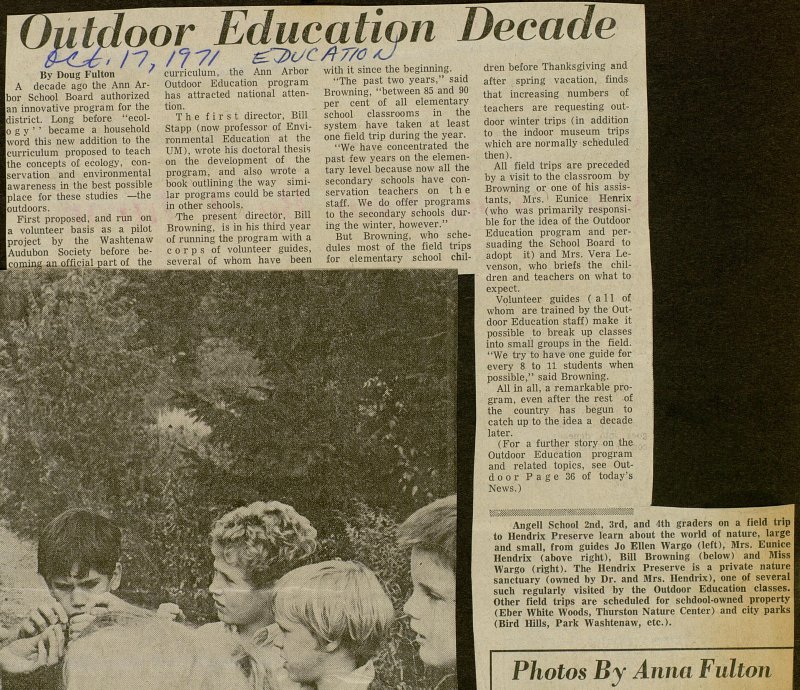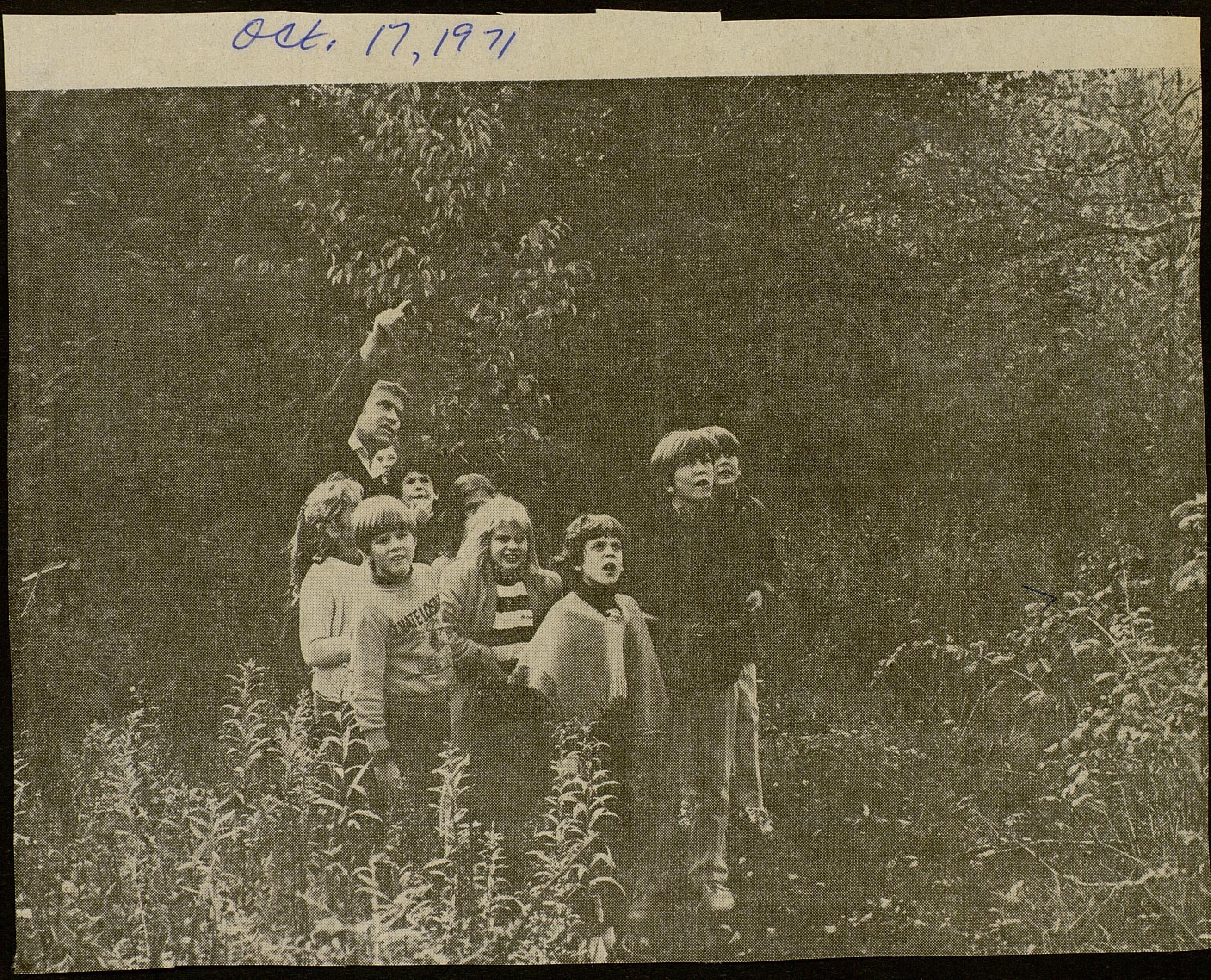Outdoor Education Decade


A decade ago the Ann Arbor School Board authorized an innovative program for the district. Long before "ecolo g y ' ' became a household word this new addition to the curriculum proposed to teach the concepts of ecology, conservation and environmental awareness in the best possible place for these studies -the outdoors. First proposed, and run on a volunteer basis as a pilot project by the Washtenaw jAudubon Society before bernmin? an official Dart of the fff t - vv" - curriculum, the Ann Arbor Outdoor Education program has attracted national attention. The f i r s t director, Bill Stapp (now professor of Environmental Education at the UM), wrote his doctoral thesis on the development of the program, and also wrote a book outlining ,the way similar programs could be started in other schools. The present director, Bill Browning, is in his third year of running the program with a corps of volunteer guides, several of whom have been with it since the beginning. "The past two years," said Browning, "between 85 and 90 per cent of all elementary school classrooms in the system have taken at least one field trip during the year. "We have concentrated the past few years on the elementary level because now all the secondary schools have coiiservation teachers on the staff. We do offer programs to the secondary schools during the winter, however." But Browning, who schedules most of the field trips for elementary school dren before Thanksgiving and after spring vacation, finds that increasing numbers qf teachers are requesting outdoor winter trips (in addition to the indoor museum tïips which are normally schëduled then). All field trips are preceded by a visit to the classroom by Browning or one of his assistants, Mrs. ' Eunice Henrix (who was primarily responsible for the idea of the Outdoor Education program and persuading the School Board to adopt it) and Mrs. Vera Levenson, who briefs the children and teachers on what to expect. Volunteer guides (all of whom are trained by the Outdoor Education staff) make it possible to break up classes into small groups in the field. "We try to have one guide for every 8 to 11 students when possible," said Browning. All in all, a remarkable program, even after the rest of the country has begun to catch up to the idea a decade I later. (For a further story on the Outdoor Education program and related topics, see Outd o o r Page 36 of today's News.)